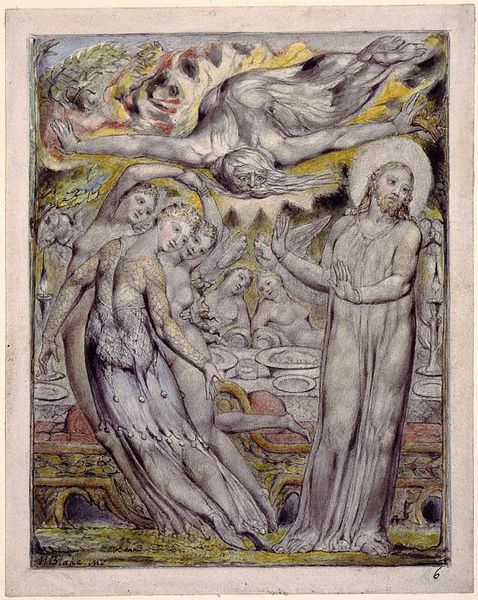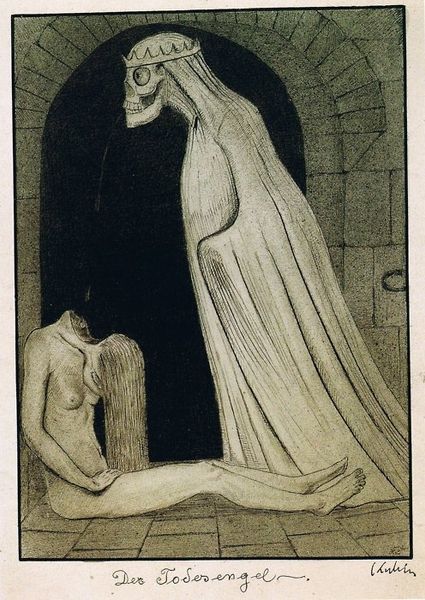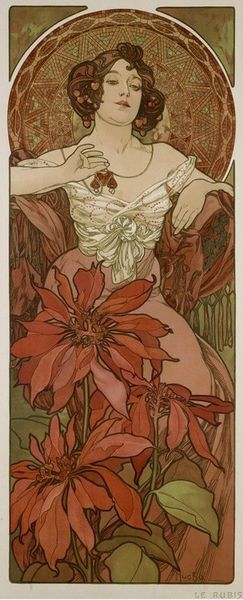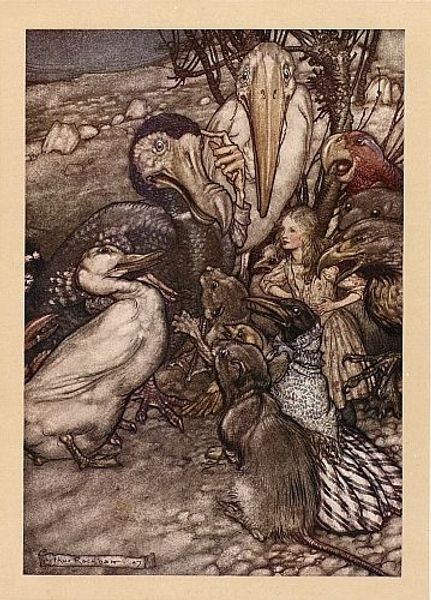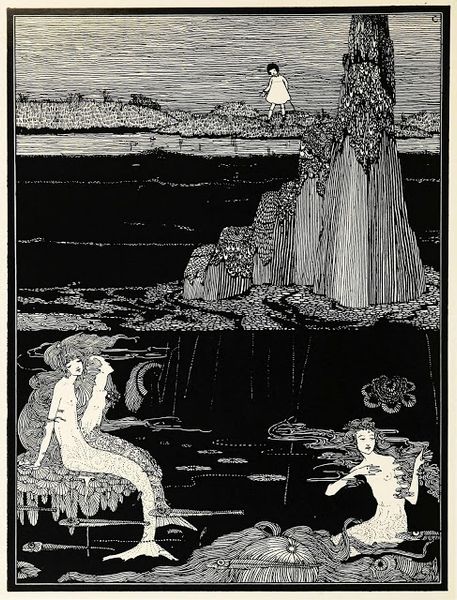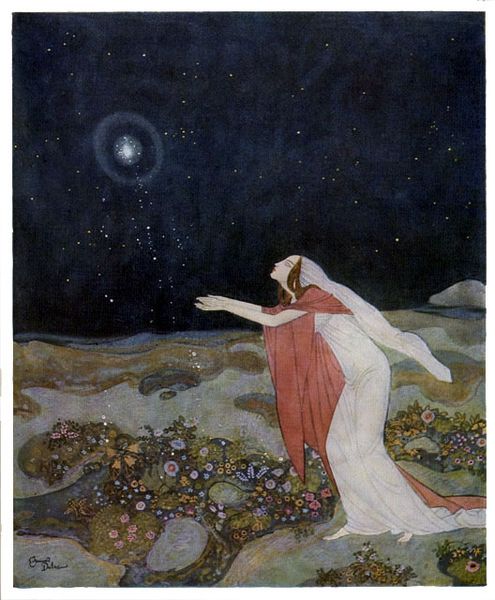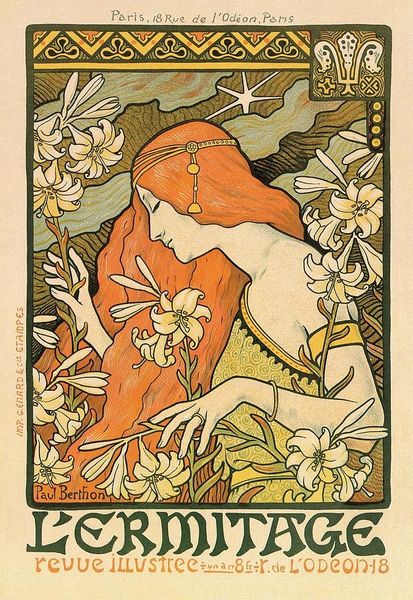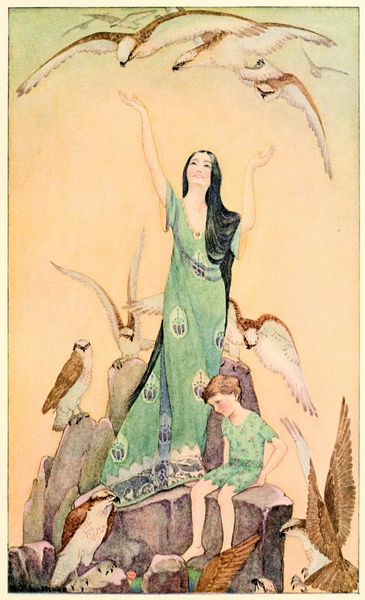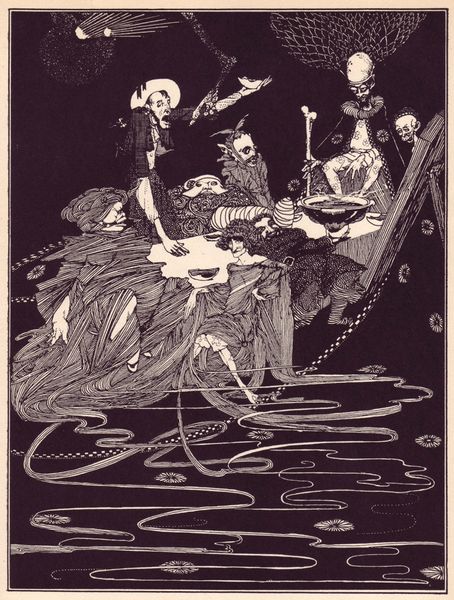
#
egg art
#
caricature
#
handmade artwork painting
#
coffee painting
#
naive art
#
art nouveau
#
watercolour illustration
#
cartoon carciture
#
watercolor
#
watercolur painting
Copyright: Public domain
Curator: Let's consider "Cassandra," a work created in 1908 by Aladar Korosfoi-Kriesch. It is labeled as watercolor illustration, invoking an art nouveau style. Editor: My first thought is that it’s striking. It feels simultaneously ancient and otherworldly, there is almost an altar cloth feel, something hand made, perhaps. Curator: Indeed. Korosfoi-Kriesch was very interested in adapting craft techniques within the fine arts context. The artwork refers to the tragic figure of Cassandra from Greek mythology. As Apollo's gift of prophecy was matched with her curse, so perhaps too is his intent matched with craft? Editor: So you see the reference to Apollo within the craft tradition? I'm curious about that application of watercolor – it is laid so smoothly it's nearly matte. You think of watercolor's translucent layering, and this seems to resist it entirely. What’s that process? It isn't accidental is it, this smoothness? Curator: Well, the medium certainly invites questions. In his lifetime Korosfoi-Kriesch sought to establish a uniquely Hungarian visual style, and this piece seems to demonstrate this search; an illustration drawing on the traditions of watercolor but aiming at a certain kind of monumentality also through its figuration. Editor: Monumentality isn't what springs to my mind immediately – and perhaps this is my craft bias. There is a definite, interesting relationship of figures – cranes both feathered and in ships – but with the title Cassandra and the woven-cloth-feel, I wonder if there isn't an intentional, perhaps even material undermining of some masculine, authoratitive impulse? Is this watercolor "Cassandra" actively fighting her corner within male historical tradition, or even undercutting it by material choice? Curator: It certainly prompts consideration about who has the authority to craft narratives, literally and figuratively, doesn’t it? We've seen how various art historical narratives surrounding craftsmanship have often marginalized certain artists and perspectives, especially those associated with craft traditions. I would suggest however that it's far too early to draw such a conclusion here! Editor: Absolutely! We're just beginning, but considering craft alongside myth immediately invites all sorts of challenges about material labor. So much here to consider... Curator: I agree, and how images have historically participated in this labor of storytelling and mythmaking is also central to a richer understanding of the legacy of "Cassandra."
Comments
No comments
Be the first to comment and join the conversation on the ultimate creative platform.
